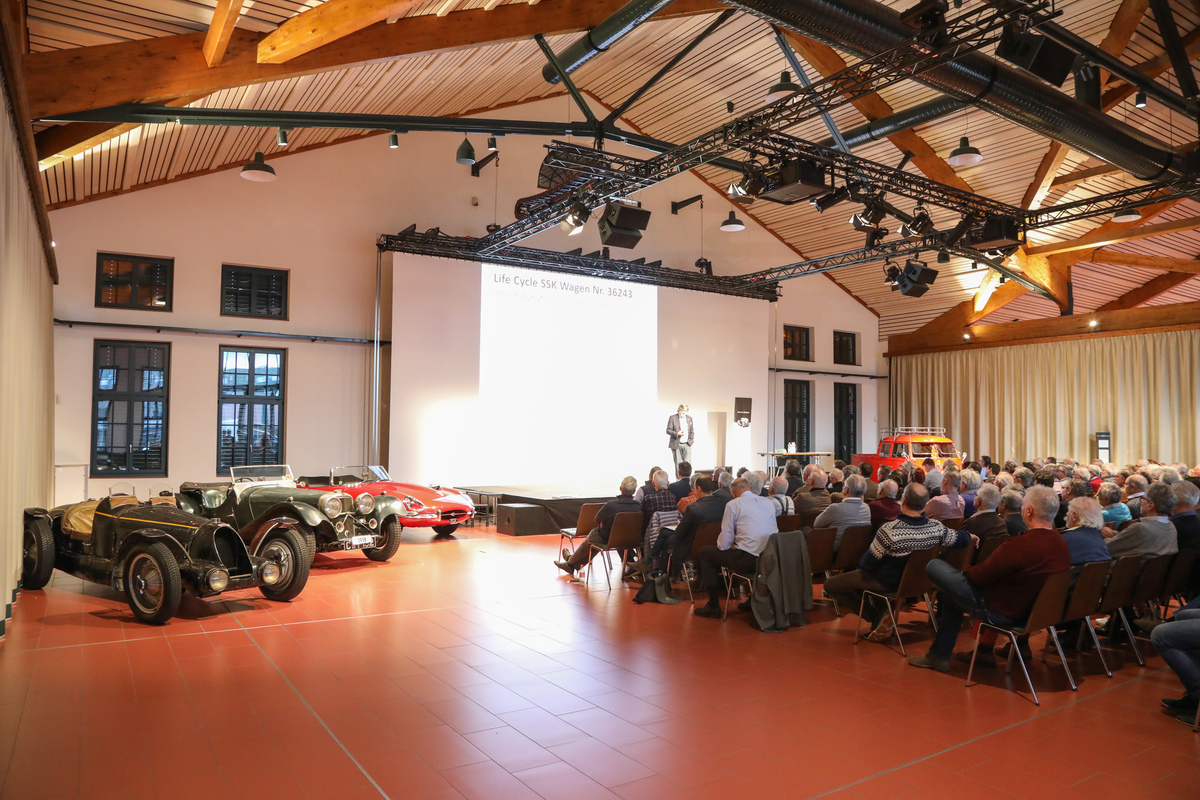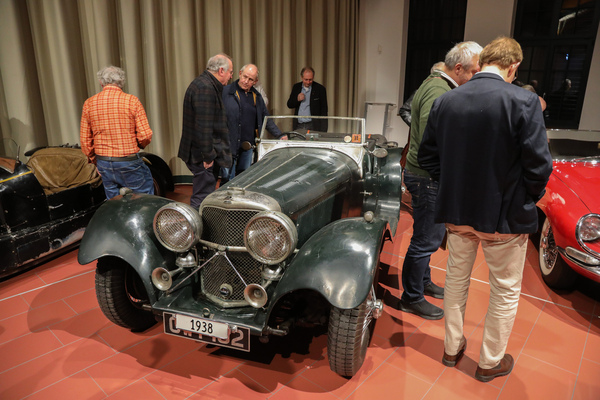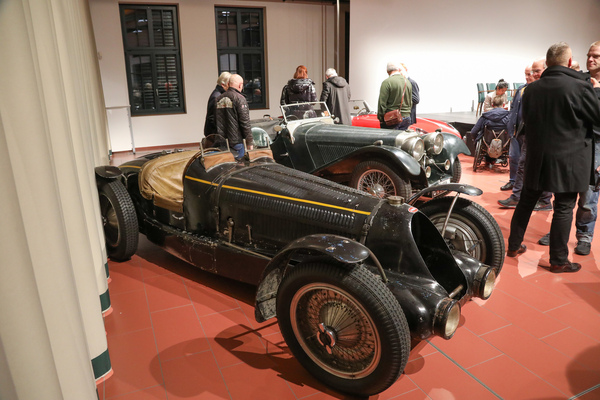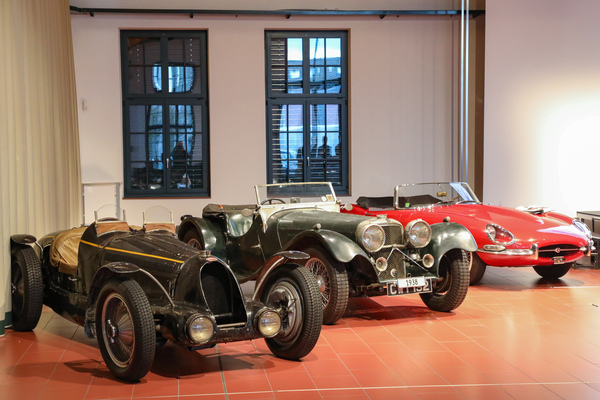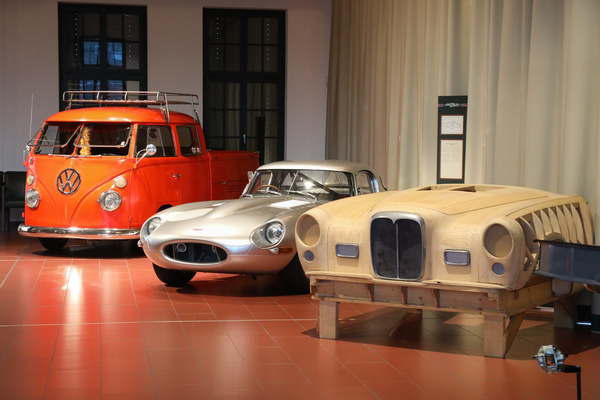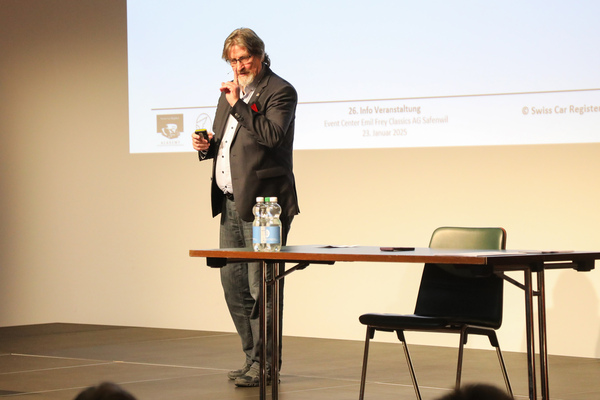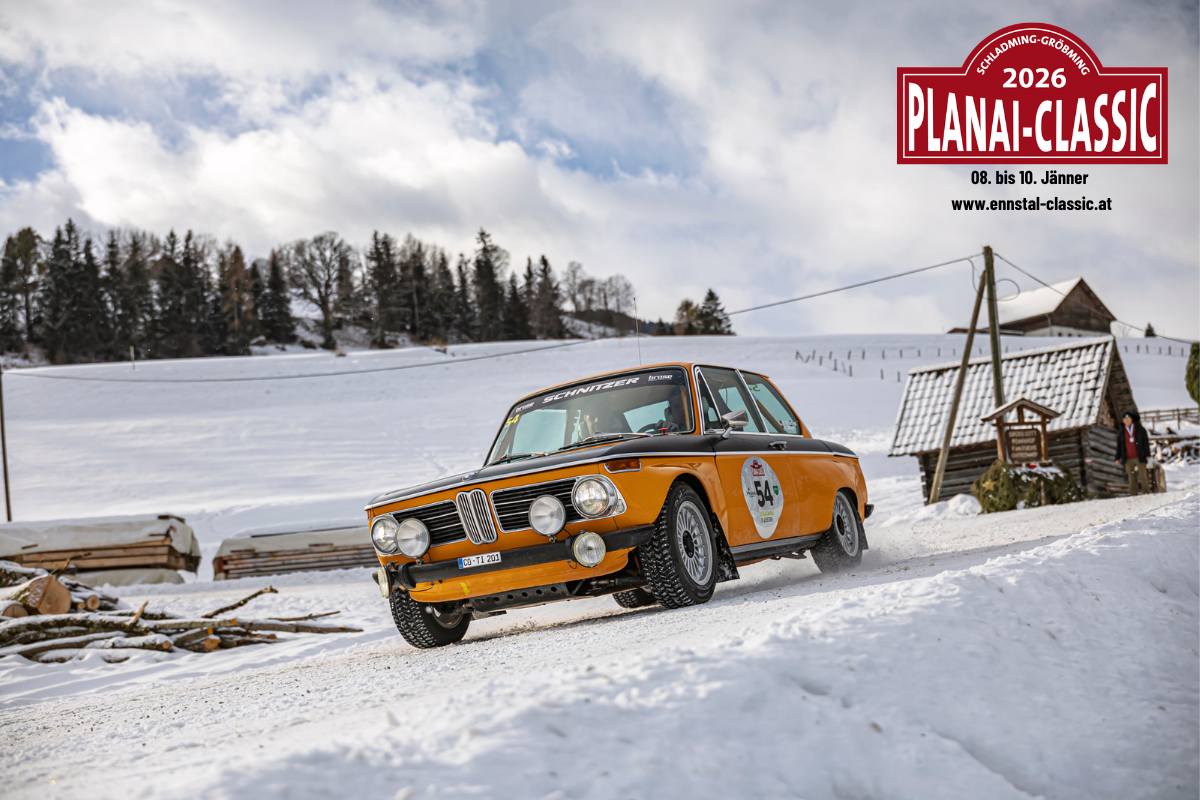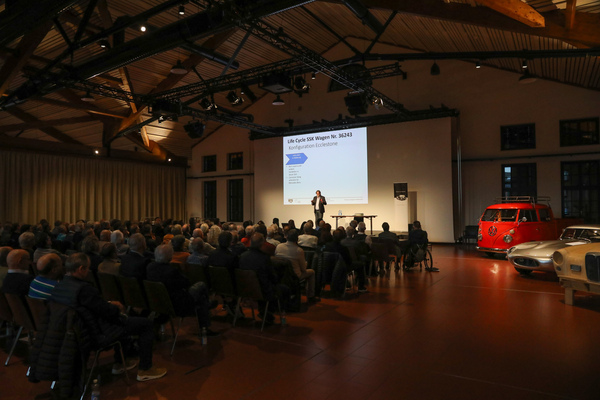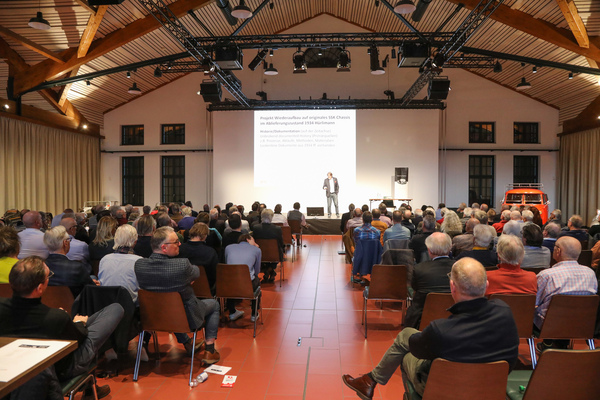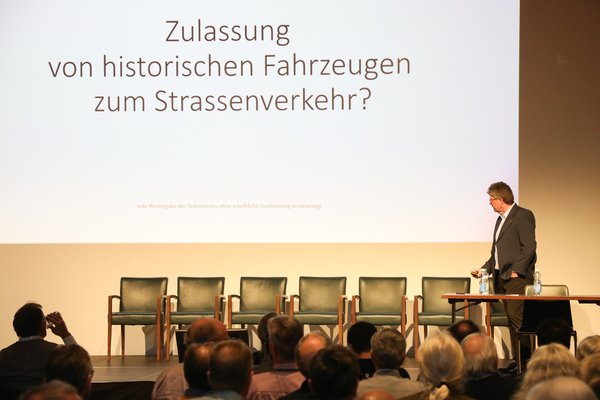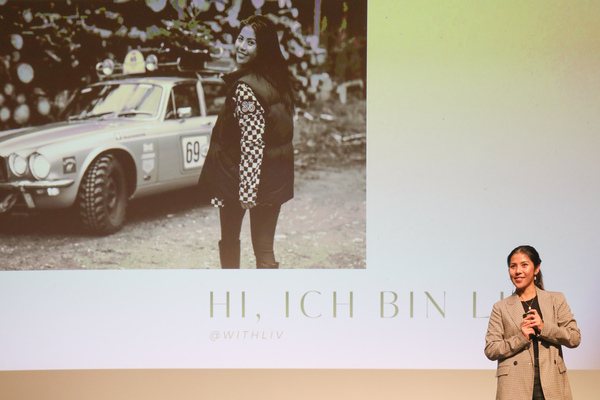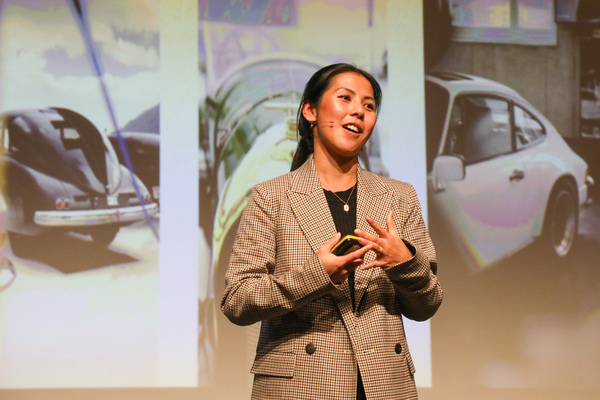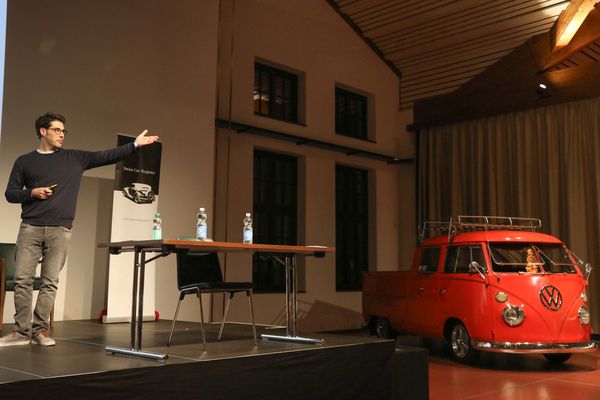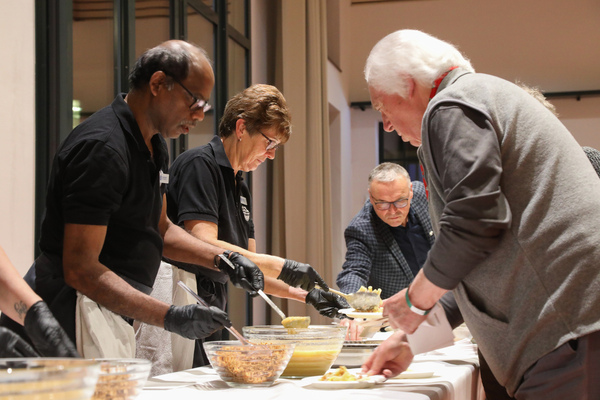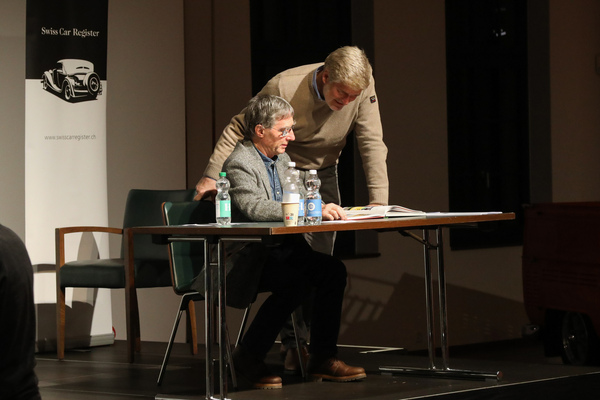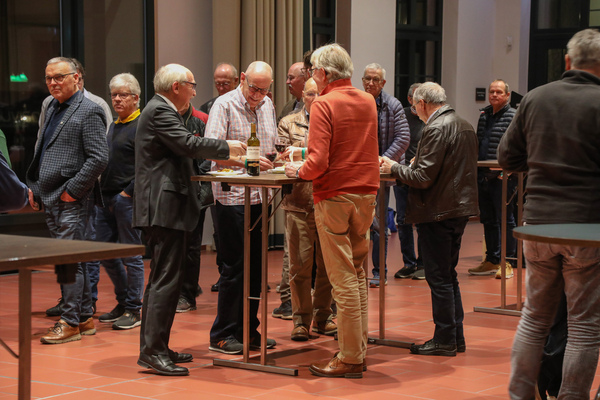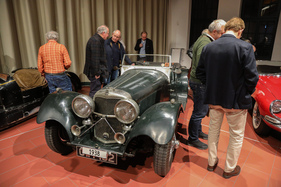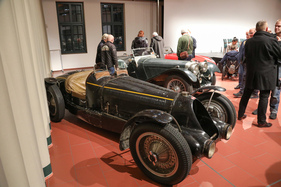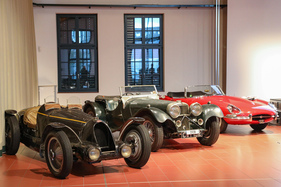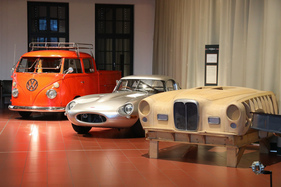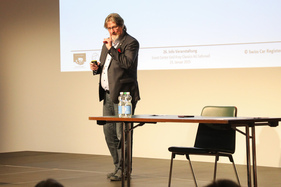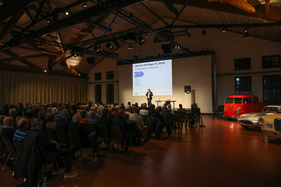Around 150 participants filled the hall of the Emil Frey Classics Event Center in Safenwil in the afternoon and early evening of January 23. The topic of conservation, restoration and next generation sounded promising. Organizer and SCR founder Urs P. Ramseier invited a whole series of speakers.
The tripartite structure of historical objects and their testimonial value
The event kicked off with Dr. Christian Jenny, co-founder of the Swiss Car Register Academy, under whose label the information evening was held. As he made clear right at the beginning of his presentation, he was concerned with the fundamental questions about the meaning of preserving historical substance as opposed to striving to restore it to its original condition. The key, according to Jenny, lies in a complex approach that can be reduced to three essential points. The identity, the history and the substance of an object - Jenny made a specific cross-reference to the Valendas fountain to emphasize the general applicability of his formula - determine the testimonial value as a historical cultural asset. The collector of historic Jaguars has taken this, and not the monetary value, as the basis on which he has rebuilt his collection of key models from the company's history in recent years. Jenny was the owner of the first SS (Jaguar) sports car ever sold, John Black's SS 90, as well as the SS 90 prototype and Jaguar C-Type number 0023. Now the Thalwil-based collector is focusing on substance and favors largely original, untouched vehicles such as the first production XK 120, which was shown at the London Motor Show - the XK 120 "Rosella" - or the E-Type, which was once used by Dr. Thomas Haddock for his restoration project. Thomas Haddock for his restoration guide, the "Ex-Briggs Cunningham and Walt Hansgen" E-Type number 875026. Together with the only unrestored SS Jaguar 100, the "Haddock" E formed part of the display of vehicles shown in Safenwil on January 23.

The concept of testimonial value formulated in the presentation is the intersection of identity, substance and history of a car. The testimonial value thus describes the significance of the car and should in future serve to demonstrate the cultural and historical value of every classic car. This is with the intention of gaining official recognition and acceptance for the owners, who preserve cultural heritage on their own behalf and at their own expense. However, Jenny also clearly emphasized the claim of driving in his presentation. In this context, he brought up the model of the American author Miles C. Collier from his work "The Archeological Automobile", who prefers the preservation of substance with the pursuit of the greatest possible conservation as the golden mean between complete (museum) decommissioning and one hundred percent preservation with ongoing loss of substance during restoration or even several such restorations. This may have been somewhat heavy fare for the somewhat older audience, but this is not the first time Jenny has presented a theoretical model to which he has subsequently added practical examples. It is certain that more detailed explanations will follow, as the busy former lecturer at the University of St. Gallen and business IT pioneer hinted.
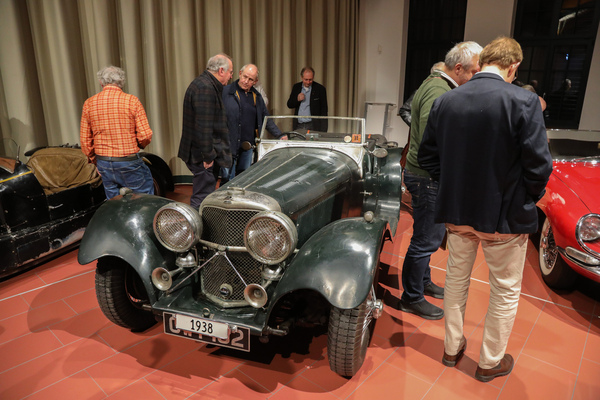
Preserved history
Simon Jau from Classic and Vintage Car AG in Spiez, Bern, presented his contribution on the subject of preservation far less in theory than in practice. As an apt example, the "U30er", as he called himself, brought along no less a car than the "Best of Show" from Pebble Beach 2024 from Fritz Burkard's Pearl Collection. Jau let the audience in on the history of the Bugatti T59 and especially, of course, that of the first of only seven GP Bugattis built, known as the "King Leopold of Belgium". By happy coincidence and circumstance, the car, converted from a GP to a 750 kg class racing car by the factory itself in 1935 and sold to the Belgian King in 1937 after the end of a sporting career with Wimille or Dreyfuss at the wheel, remained untouched despite the deportation of the Belgian royal family in 1944 and subsequent exile in Switzerland until 1959. Sold in 1968, the car, still painted in the colors of the Belgian king - black with yellow stripes - passed through various collector's hands, all of which have retained the Bugatti's visual appearance. In Burkard's possession for several years, Simon Jau has now preserved the traces of the vehicle - for example by uncovering the first registration number - and protected the paintwork from further deterioration. Those who took some time after the end of the event on January 23 were able to make sure that the mechanics were also in top shape when the car was loaded.

"To finish the business"
Host and host Hannes Gautschi from Emil Frey Classics introduced the audience to the history of the Jaguar E-Type Lightweight. However, the object from the company's own collection is not one of the twelve originals, but one of six Jaguar replicas from 2015. The six cars bear the chassis numbers that were reserved by the factory for the racing version of the E at the time, but were not used due to a lack of demand. Built according to the original plans by the original manufacturer, Gautschi raised the question of whether the ideal and real owner of the intellectual property of such a vehicle can be told when to stop building their own cars or whether it should be rejected if there is a gap of several decades between two production periods. Of particular interest during the presentation of the car was the presentation of the rather extensive technical differences between the Lightweight and the production car, which could be seen in the Haddock E-Type 875026. Gautschi also referred to the impossibility of obtaining road approval for the E-Type, which is only 10 years old.
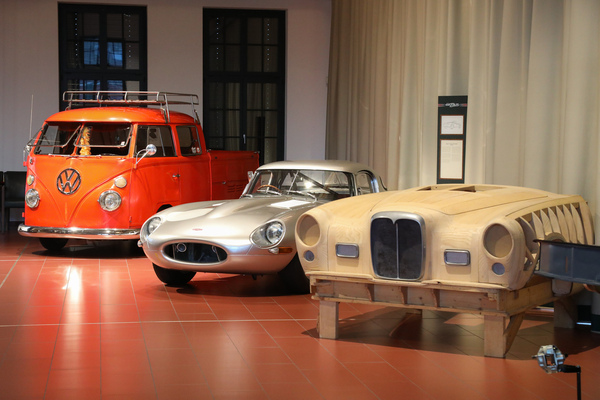
Urs P. Ramseier, a nephew of Fritz Ramseier, explained how a Mercedes SSK with bodywork by Fritz Ramseier is to be resurrected in Worblaufen using historical records and pictures, the help of a modern design office and the scientific support of a forensic scientist specializing in metallurgy: "Unggle Fritz". As Ramseier revealed, not without mischief, the identity of the original chassis required for this could be determined unambiguously: "From one of the 56 original SSKs out of 36 built...". With the certainty of having found the correct basis of the Worblaufen car once bodied for the Swiss tractor manufacturer Fritz Hürlimann under a white SSK kept in Bernie Ecclestone's former collection, the reconstruction work should now be possible. In order to visualize the finished car, Spadaconcept in Turin, the design studio of Ercole Spada (Zagato, BMW or Fiat) and his son Paolo (Smart Roadster), has produced a render. Ercole Spada assured us that he would be able to produce the 1:1 drawings for the coachbuilder.
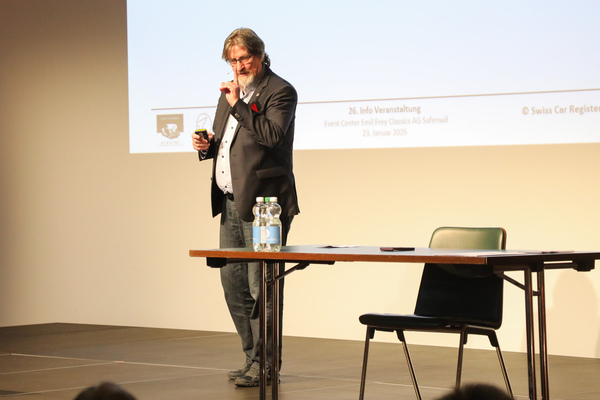
Even more theory and next generation
René Gauch, the person responsible for the FIVA ID cards and for technical issues at the umbrella organization SHVF Swiss Historic Vehicle Federation, took up the topic of road approval. He did not bring up any forward-looking theories or practical reports, but rather the sober reality of the laws and regulations and contrasted this with the FIVA Fédération Internationale des Véhicules Anciens' approach to the classification of historic vehicles (and those that claim to be). It became clear that Switzerland is once again going one step further with regard to the approval of conversions and replicas. The leeway that was still available a few years ago for the re-bodying of existing "running chassis", i.e. complete chassis including drive train, no longer exists. For specials, for example, as well as for hot rods from more recent times, even with a historic donor vehicle as an identity creator, the train has left the station. And even for safety-relevant conversions, such as a disc brake system, there are hurdles - at least when it comes to registration as a veteran vehicle.
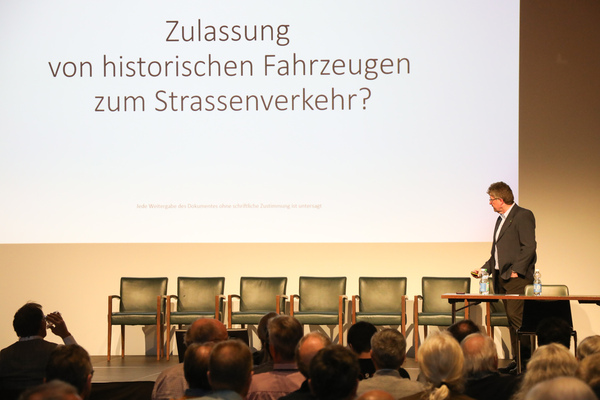
The young photographer, car blogger and Instagram content producer Liv @withliv made a far more emotional appearance afterwards. She presented herself and her motivation, an excerpt from her very diverse work and answered questions from the reporter of these lines. It is remarkable and to the young woman's credit that on the same day she could have taken part in a driving training course in the snow with a Swedish car brand or a party in a trendy Zurich pub organized by a group of young car enthusiasts who use social media and corresponding apps to exchange ideas and form groups. But instead, she introduced a group of "seniors", as she wrote in a story on her Instagram account afterwards, to the big world of the new digital generation and the way they deal with the topic of classic cars. It also touched on the possible reasons why Generation Z seems to be far less interested in classic cars or even cars in general. As Liv noted, for example, the exchange of information between the generations does not seem to work very well. She also mentioned the costs involved in buying a classic car - both in terms of procurement and maintenance.

@withliv does not own a classic car of her own, but thanks to her popularity with around 40,000 followers and a constantly growing network of real-life acquaintances from the classic car scene, she is regularly invited to drive corresponding vehicles and produce corresponding content. It became very clear in the Zurich native's presentation that her reach offers a great opportunity to reach a different, younger generation. The topic was taken up again in the panel discussion that followed later and was discussed with great enthusiasm by the audience.

Knowing what, why and how to deviate from the original
For more than 30 years, the Cagero company in Birr, Aargau, has been the first port of call for parts and accessories for classic Volkswagens. Business partner Roman Haltiner not only brought along the company's own VW Transporter T1 DoKa from 1966, but also a presentation on the subject of modified classics. He emphasized that the VW scene appeals to younger fans and enthusiasts across the board and is characterized by a wide range between the strict original condition of the vehicles and the freedom to convert and individualize them to one's own taste. Haltiner made it clear that even with an extreme conversion, as he demonstrated with the example of a lowered 1953 Ovali Beetle with Fuchs rims, the dignity of the vehicle must be preserved. The van he brought with him, painted bright orange and decorated with pinstripes, lowered, with chrome window frames and bumpers and the famous "safari" display windows, hardly ever ordered ex works for a workhorse like a crew cab, made this even clearer.
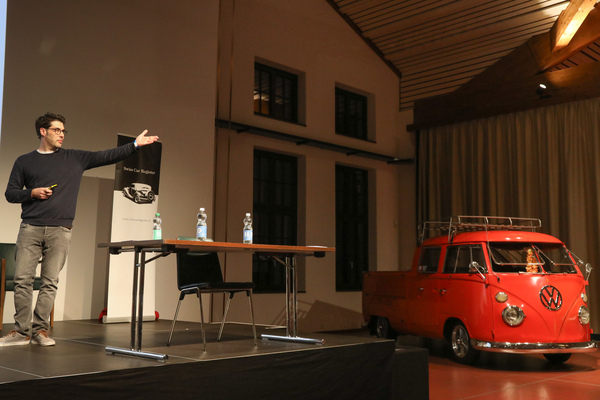
Haltiner gave a deep insight into the processes that his company goes through when it has a modified part manufactured, tested and certified so that it can be legally installed with the blessing of the motor vehicle inspection or - as Cagero also exports - with the blessing of the TÜV. Their solution for replacing the steering racks for the T1 van, which are no longer available, served as an example. Cagero now installs rack-and-pinion steering systems and thus gains more steering precision while maintaining the same steering geometry. In addition, there are also disc brake systems with two brake circuits with the corresponding approvals. Haltiner's plea for a more open scene, where everyone is given the freedom to be accepted with a car to their liking, concluded the presentation part of the evening.
Moving the next generation and admission
In the concluding panel discussion, some of the main points were discussed again, and in the subsequent round of questions from the audience it became clear that the topic of vehicle conversions can hardly be dealt with conclusively and that the resulting consequences, especially with regard to registration, must always be considered individually. Another topic that was addressed with various comments rather than actual questions was the next generation. There was clear agreement that access to classic vehicles should be made easier for young people and that initiatives should be supported which, for example, enable interested young pilots to take a taster drive or take part in club outings. In his concluding remarks, the organizer also called on the participants to introduce their children to their own hobby and passion as early as possible and to turn a blind eye, or rather both ears, to the "first scratch in the gears". And also addressing the topic of young talent, Urs P. Ramseier concluded by affirming the Swiss Car Register's intention to hold the traditional event later in the day or even on a Saturday in future, so that working, younger enthusiasts can take part in the Swiss Car Academy without the need for an absence to be approved by their boss or even an extra half day's vacation.

The 26th SCR Info Evening came to an end with the obligatory "Älplermagronen" and many robber stories, new contacts - very valuable especially for the invited "Next Generation" and, as a highlight at the end, the roar of the Bugatti T59's 3.3-liter in-line eight-cylinder engine during loading.
